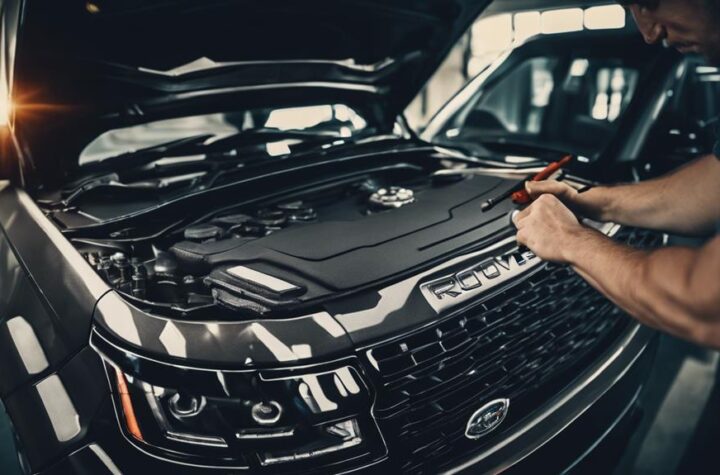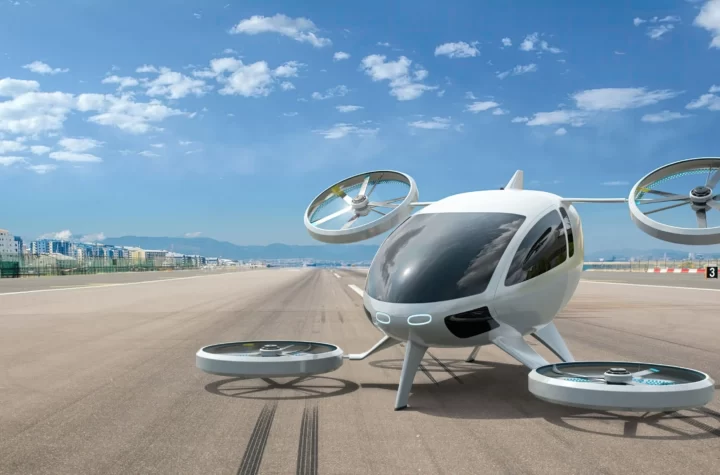Nineteen-ninety-nine was a pivotal year for the domestic automobile industry. For the first time in its history the Big 3 sold more light trucks than cars. The future of the large American sedan was looking bleak as more Americans were ditching cars in favor of more versatile SUVs and light trucks. That same year, Ford Motor Company initiated the Tall Sedan Program with the goal of reinventing the American sedan — creating a vehicle for people who needed more than just a car, loved what the minivan did for them but didn’t really like the image and found true SUVs a little excessive.
The future of the large American sedan was looking bleak as more Americans were ditching cars in favor of more versatile SUVs and light trucks. That same year, Ford Motor Company initiated the Tall Sedan Program with the goal of reinventing the American sedan — creating a vehicle for people who needed more than just a car, loved what the minivan did for them but didn’t really like the image and found true SUVs a little excessive.
“That’s where the concept came from,” says Amy Marentic, marketing manager, Ford Freestyle and Five Hundred.
And that concept led to the development of Ford’s first true crossover and the off-shoot Ford Five Hundred and Mercury Montego sedans.
In the initial phases of the program, scientific research was used to help Ford define the people who made up this new segment. Ethnography, a descriptive study of human behavior as it pertains to technology, allowed the development team to virtually live with consumers.
“We put cameras in people’s cars, we went out and rode with them,” Amy says. “We paired them up with psychologists to try to get inside their heads and discover their unanticipated needs.”
The team also had the luxury of seeing a lot of competitor’s crossover-type vehicles come out before launch. Ray Nicosia, manager, Vehicle Engineering, says that they were able to evaluate some of the early entries to see what worked and what didn’t.
“Clearly the Pontiac Aztek didn’t do it,” Nicosia says. “We saw some good points in the Honda Pilot and we found some things that weren’t so great.”
Nicosia says that the team saw the compromises that people were making to get the packaging flexibility of an SUV in a car-like product.
“This was our chance,” Nicosia says, “to create a vehicle that didn’t require compromise. The new vehicle needed to express all of the positive attributes and utility of an SUV with the ride of a large sedan.”
With program approval in the spring of 2001 and with the vehicle’s attributes now etched in steel, it was time to find the right architecture.
Nicosia says that the Windstar minivan was dismissed early on. Research showed that vehicles based on a minivan platform weren’t delivering the necessary sedan-like dynamics. The Taurus was studied, but it didn’t support the interior package and all-wheel-drive system.
The saving grace came through Ford’s aquisition of Volvo in 1999. One of the company’s assets was its P2 platform and Haldex AWD system found under the S60 and S80 sedans. The Volvo platform proved to be the perfect base for the new crossover.
“The choice of that platform enabled the design of the third row,” says Joan Florian, manager, program management.
Florian says that exterior designer Ed Golden had the most challenging job in that the vehicle was specifically designed from the inside out to facilitate flexibility in utility and packaging. “When you’re in that vehicle,” Florian says, “there is no compromise in package. And Ed had to find a way to make it feasible.”
“The third row seat was one of the things we knew we could nail and had to deliver,” Nicosia says.
 |
| This early interior sketch shows an experimentation with color trim on the IP. |
 |
| The third-row seat, available as a bench or optional 50/50 split, easily folds into the rear cargo floor, creating a flat load surface. The design team also made sure that it can be opened back up without needing to climb into the vehicle on your hands and knees. The second row seats (captain’s chairs or 60/40 split bench, both standard,) fold flat, as well as the front passenger seat, providing 9.5 ft. of open pass-through storage space. |
“When you’re developing something that’s more or less all new,” Florian says, it challenges people to think differently than they had before.”
Another challenge was creating a flat load floor. The initial design used plastic pieces to fill the gaps between the seats when they were down.
“They were very fussy and very complicated,” says Bill Macatamey, planning specialist, product planning.
Vice President of Product Development, Chris Theodore, sent them back to the drawing board. Many hours were spent back in the studio re-engineering the second and third row seats to create a flat floor when folded, without the need for spacers.
“It was sort of a David Copperfield trick,” Florian says. “We’re all very proud of the execution. That took a long time to come to resolution and it took some real creative thought.”
While the exterior design fluctuated between car and truck, the interior design was always focused on delivering SUV attributes with the look of an upscale sedan — the same look found in most luxury SUVs. The interior does carry over some SUV styling cues like the grab handle on the A-pillar and round air vent covers from the Expedition.
“I can remember when it got down to materials,” Florian says. “I remember focusing on the center stack and trying to decide if we should have flat tones, high gloss or fake wood.”
She found out that consumers loved the fake wood accents.
“That’s one of my favorite lines,” Marentic laughs, “I know it’s fake, but it’s shiny and I like it.”
A lot of the early interior development was done using an ergonomic tool called digital occupant. Each member of the team (numbering as high as 700 suppliers, engineers, designers and program managers at program review), were classified by height and weight. Team members wearing special electronic suits could “get into” the virtual interior and evaluate things like console size and cup holder placement. When a change was made, it was validated to make sure it worked for both males and females in all categories. As a result of virtual development, the parking brake was moved to the floor to create more storage space in the center console.
“I remember our VP (Chris Theodore) was profiled himself,” says Florian. “We’d all be suited up and go in to evaluate the IP.”
Drawing Conclusions
Golden says that while styling was important, it shouldn’t be the reason to reject the car.
“We weren’t talking about avant-garde or modern or breakthrough,” Golden says. “This was our opportunity to connect and meet the customer’s expectations with an appropriate design. Mustang is our chance to win design awards.”
Once the proportions were set, the debate centered on the balance of car versus SUV with the final design leaning more toward SUV .
“What we wanted to do was interject a little bit of toughness in this car, which is something that people like about an SUV,” Golden says. “But we didn’t want to hinder this car with some of the functional negatives that some of these fence-sitters see in SUVs.”
Stance was very important. The wheel flanges were enlarged so the wheels could be pushed out to the corners, giving Freestyle a very stable look — a styling cue borrowed from the SUV program.
The tall package vehicles presented a real design challenge for Golden’s team.
“At some point early on,” says Golden, “we looked at this as being a wagon off of a sedan. That was something that we had on our sketch pads. But we dismissed it very early on because that wasn’t going to be good enough … that wasn’t going to move ahead into the new millennium, attracting people that were currently in SUVs.”
Freestyle utilizes other Ford SUV design cues, like blacked-out C- and D-Pillars, bodycolored B-pillar and two-tone paint. The front end treatment also plays into the SUV family.
 |
| Details like the small wheel well flares on the Five Hundred sedan (above) were tweaked in the wind tunnel to improve NVH. This sketch of the Five Hundred sedan (below) circa summer 2001, represents a flavor of the crossover character blending into the sedan as seen by the chiseled groove along the lower body. |
 |
The A-Pillar position on the platform is not common between the sedan and crossover. “That was a big debate,” Golden says. “If I remember correctly it would have been easier to manufacture with a common point, it would have allowed us to share a lot of parts, but we said, ‘listen, if we’re going to move the needle between these two vehicles and we’re going to make the sedan as elegant and European as possible and give this Freestyle its proper SUV look, these are one of the hard points that we’re going to have to compromise on.’
The sedan was developed after Freestyle using the same platform but wearing a unique interior and sheetmetal. The sedan and crossover are different enough that the windshields are manufactured in two different processes. The Freestyle’s windshield is a sag form and the sedan windshield is pressed.
Chicago Assembly is the latest plant to be converted to Ford’s new flexible manufacturing system. That allowed the team to do two different door openings, two different windshields and two completely different interiors.
Another challenge facing the design team was the need to limit the number of buildable combinations for both vehicles.
“We wanted a strategy that would first and foremost satisfy the customers and be simple for our dealers and drive positive residuals,” Florian says.
Florian, Macatamey and Marentic were able to come up with an options package that could satisfy 93 percent of customer orders, while reducing buildable combinations to less than 200, compared to Taurus at 35,000. Added to that, no option other than the $1,700 AWD system costs more than $1,000.
Florian also points out the Chicago Assembly would be building two completely different cars with completely different interiors on the same line so there was a necessity to minimize the complexity of each vehicle.
“Chicago is the second oldest plant and we were ‘real estate challenged’ so we really couldn’t expand inside the walls,” Florian says.
Chicago’s body area manager was a member of the development team, serving as the launch manager and expert on whether or not these decisions were favorable for efficient building. Fewer combinations also lessen the chance of manufacturing errors and help to speed up the line. Faster builds mean cars can get to the customers faster. Chicago is on tap to run 72 jobs per hour when the plant is at full speed. That’s compared to about 68 jobs per hour for the Taurus and Sable.
“The launch manager and I had many discussions over how many bodies we could put in the automatic retrieval,” Florian says. “What that maximum number should be. That went into every decision we made in terms of the cost benefit of making a given decision.”
Nicosia says that the supplier park adjacent to the Chicago plant was a huge enabler. Suppliers are doing modular assembly, preassembly and testing outside the assembly plant.
“That saves space on the plant floor and increases the flexibility,” Nicosia says. “And we needed the flexibility in the plant in order to do more of the individualization.”
| Really Big Shoe Ford initially dubbed its new all-purpose vehicle CrossTrainer after the all purpose athletic shoe. That was the name of the vehicle from day one,” says Amy Marentic, Marketing Manager Ford Freestyle and Five Hundred. “from the time it was put into the cycle plan. CrossTrainer kind of stuck. Ford introduced the CrossTrainer to the public at the 2002 Chicago Auto Show. “At that point we hadn’t started the formal nomenclature process yet,” Marentic says. “We have a formal process that we use and once that started we researched CrossTrainer along with many other names including Xtrainer (think X-Games). Freestyle was really the hands down choice for this vehicle.” |














































 Paving the Way
Paving the Way


